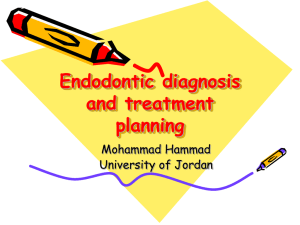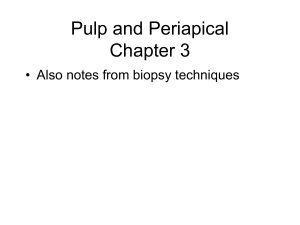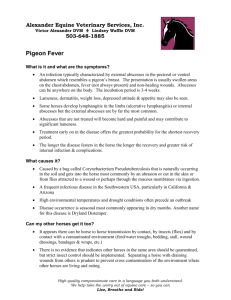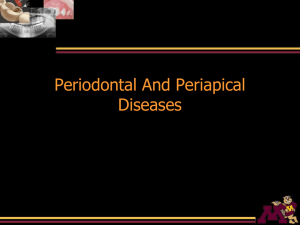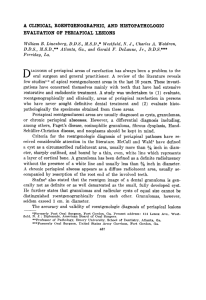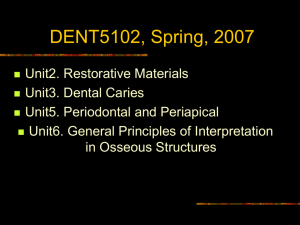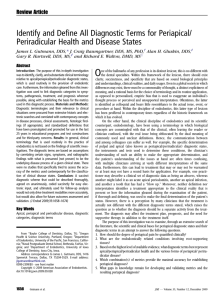Objective: The objective of this study is to determine and
advertisement
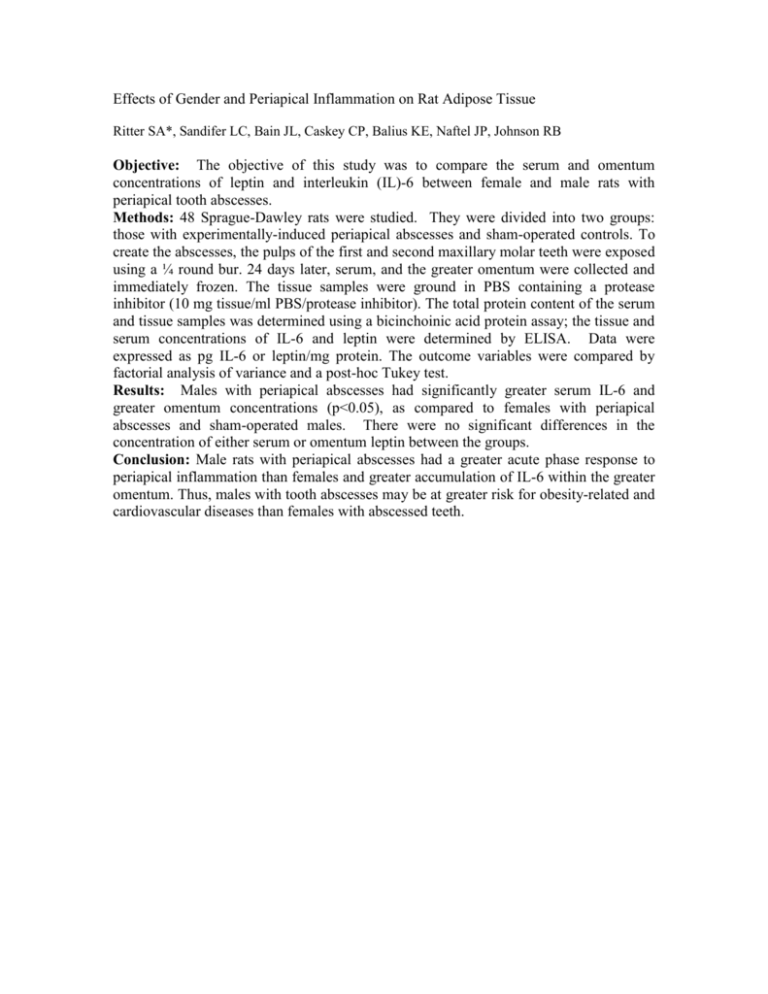
Effects of Gender and Periapical Inflammation on Rat Adipose Tissue Ritter SA*, Sandifer LC, Bain JL, Caskey CP, Balius KE, Naftel JP, Johnson RB Objective: The objective of this study was to compare the serum and omentum concentrations of leptin and interleukin (IL)-6 between female and male rats with periapical tooth abscesses. Methods: 48 Sprague-Dawley rats were studied. They were divided into two groups: those with experimentally-induced periapical abscesses and sham-operated controls. To create the abscesses, the pulps of the first and second maxillary molar teeth were exposed using a ¼ round bur. 24 days later, serum, and the greater omentum were collected and immediately frozen. The tissue samples were ground in PBS containing a protease inhibitor (10 mg tissue/ml PBS/protease inhibitor). The total protein content of the serum and tissue samples was determined using a bicinchoinic acid protein assay; the tissue and serum concentrations of IL-6 and leptin were determined by ELISA. Data were expressed as pg IL-6 or leptin/mg protein. The outcome variables were compared by factorial analysis of variance and a post-hoc Tukey test. Results: Males with periapical abscesses had significantly greater serum IL-6 and greater omentum concentrations (p<0.05), as compared to females with periapical abscesses and sham-operated males. There were no significant differences in the concentration of either serum or omentum leptin between the groups. Conclusion: Male rats with periapical abscesses had a greater acute phase response to periapical inflammation than females and greater accumulation of IL-6 within the greater omentum. Thus, males with tooth abscesses may be at greater risk for obesity-related and cardiovascular diseases than females with abscessed teeth.
